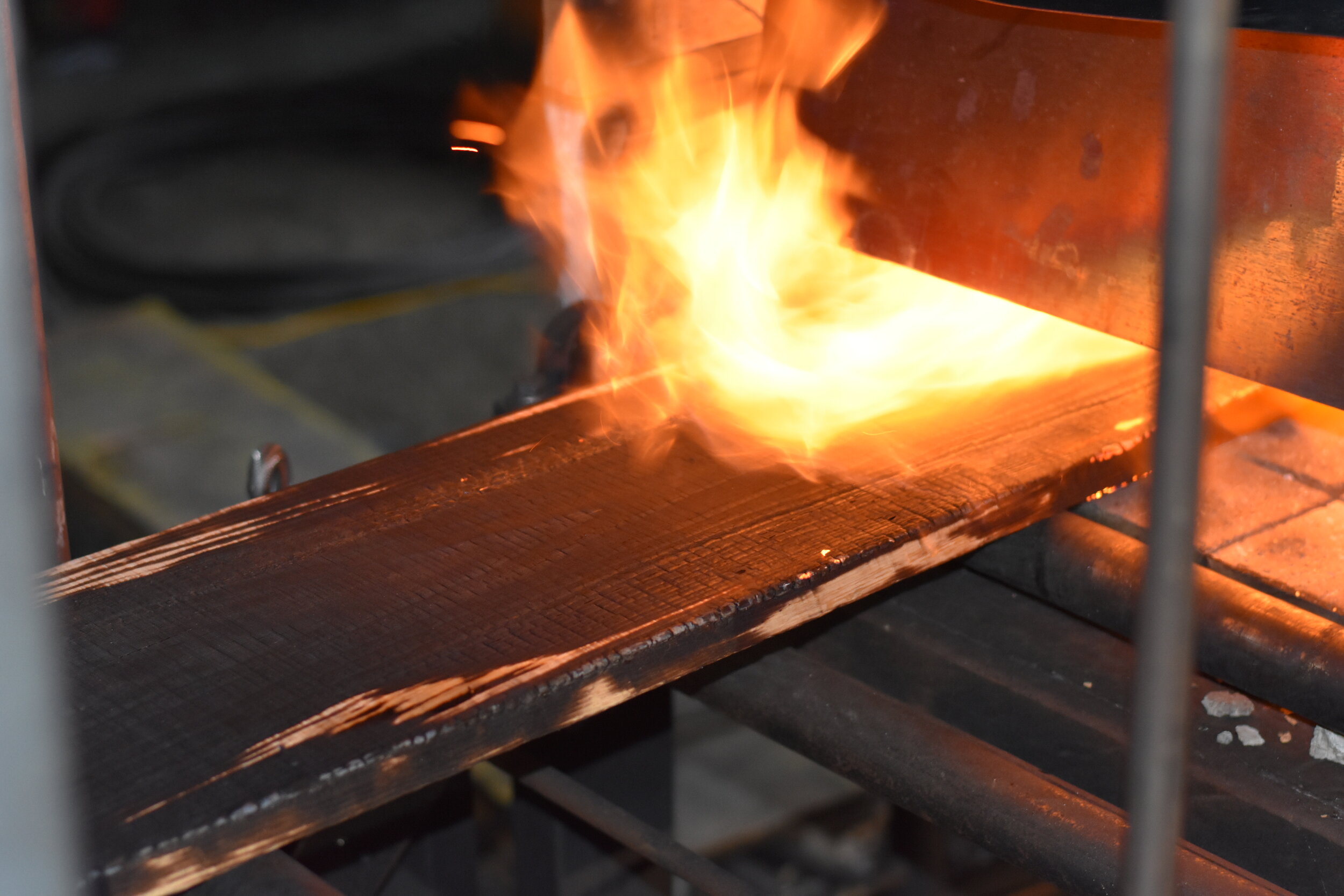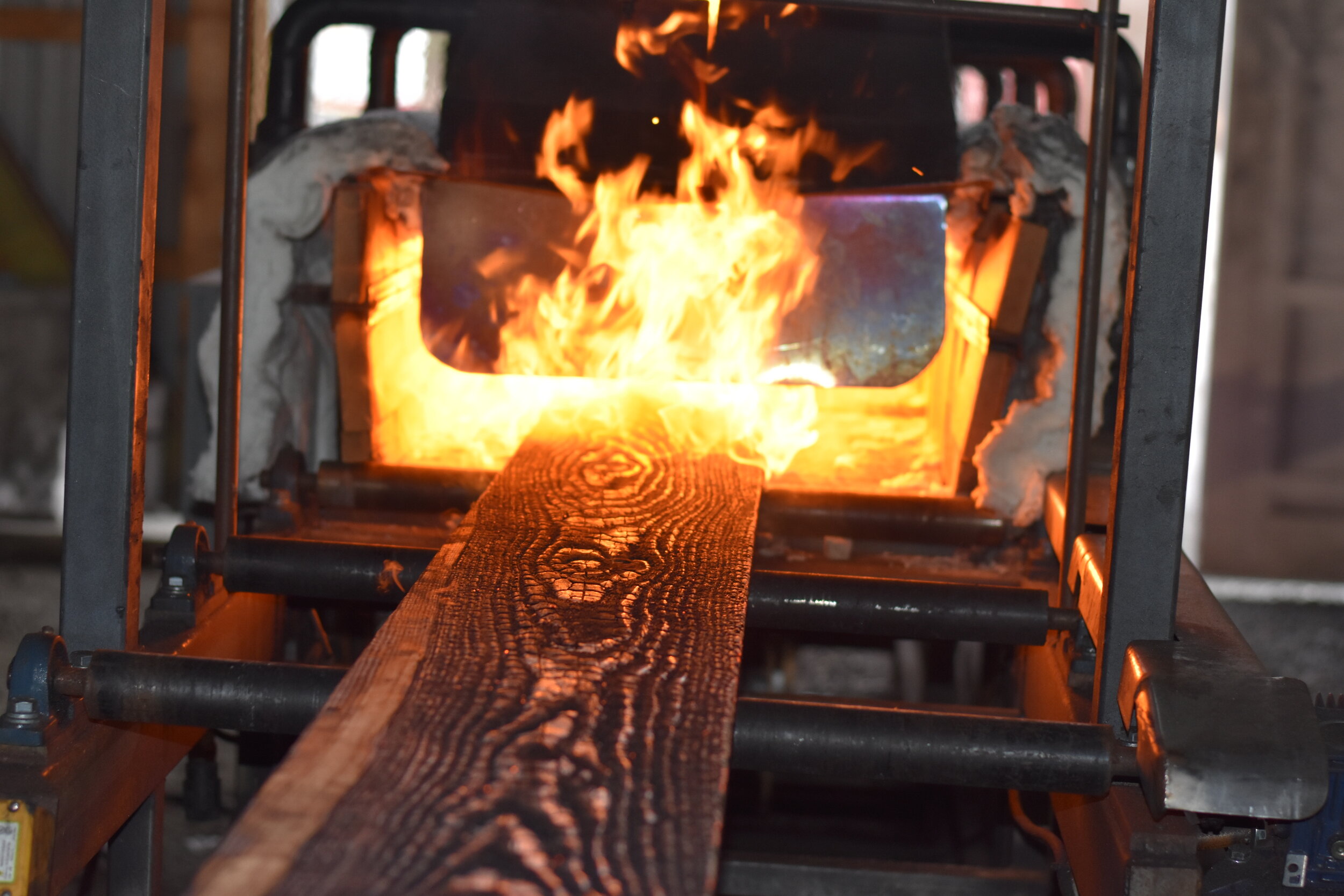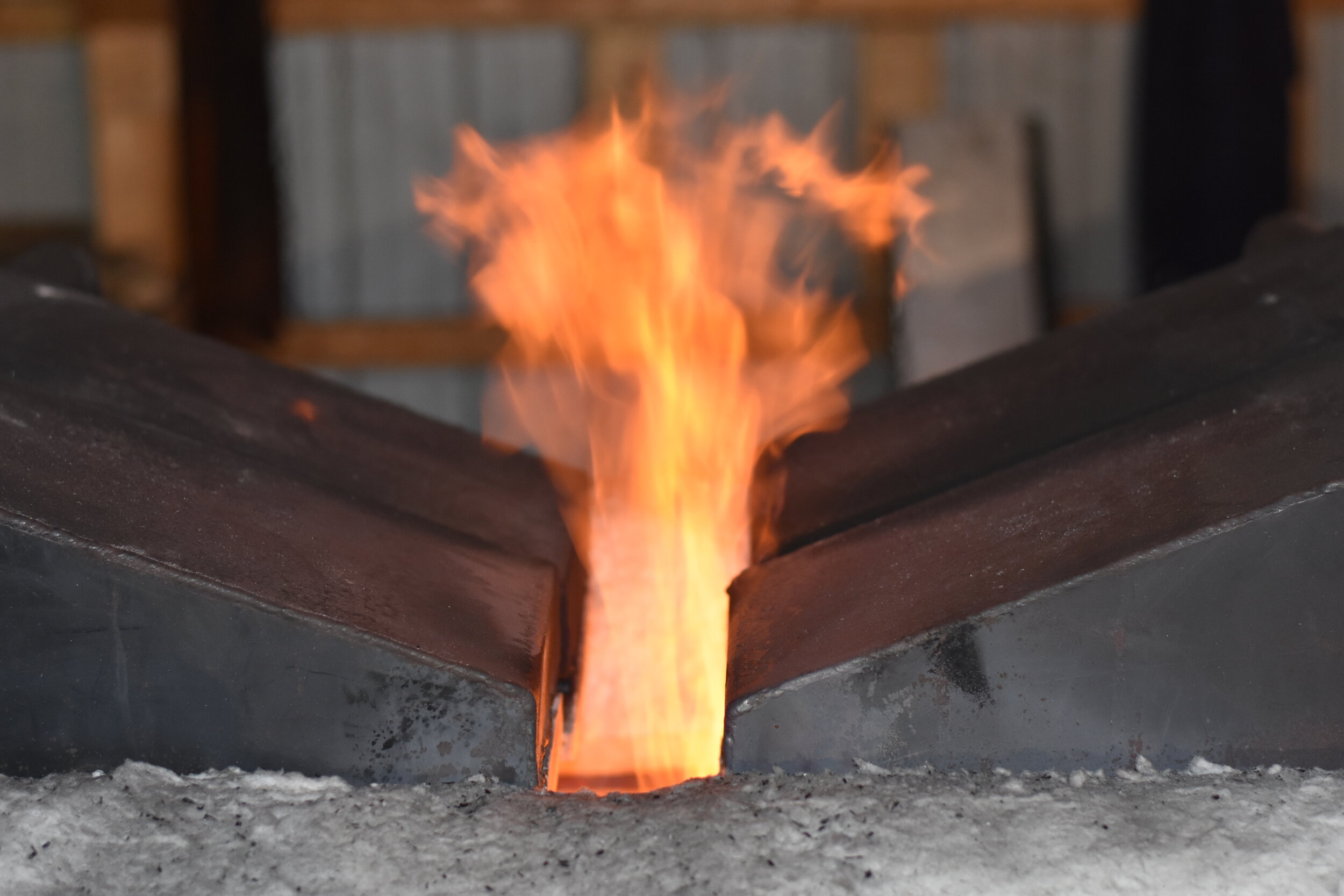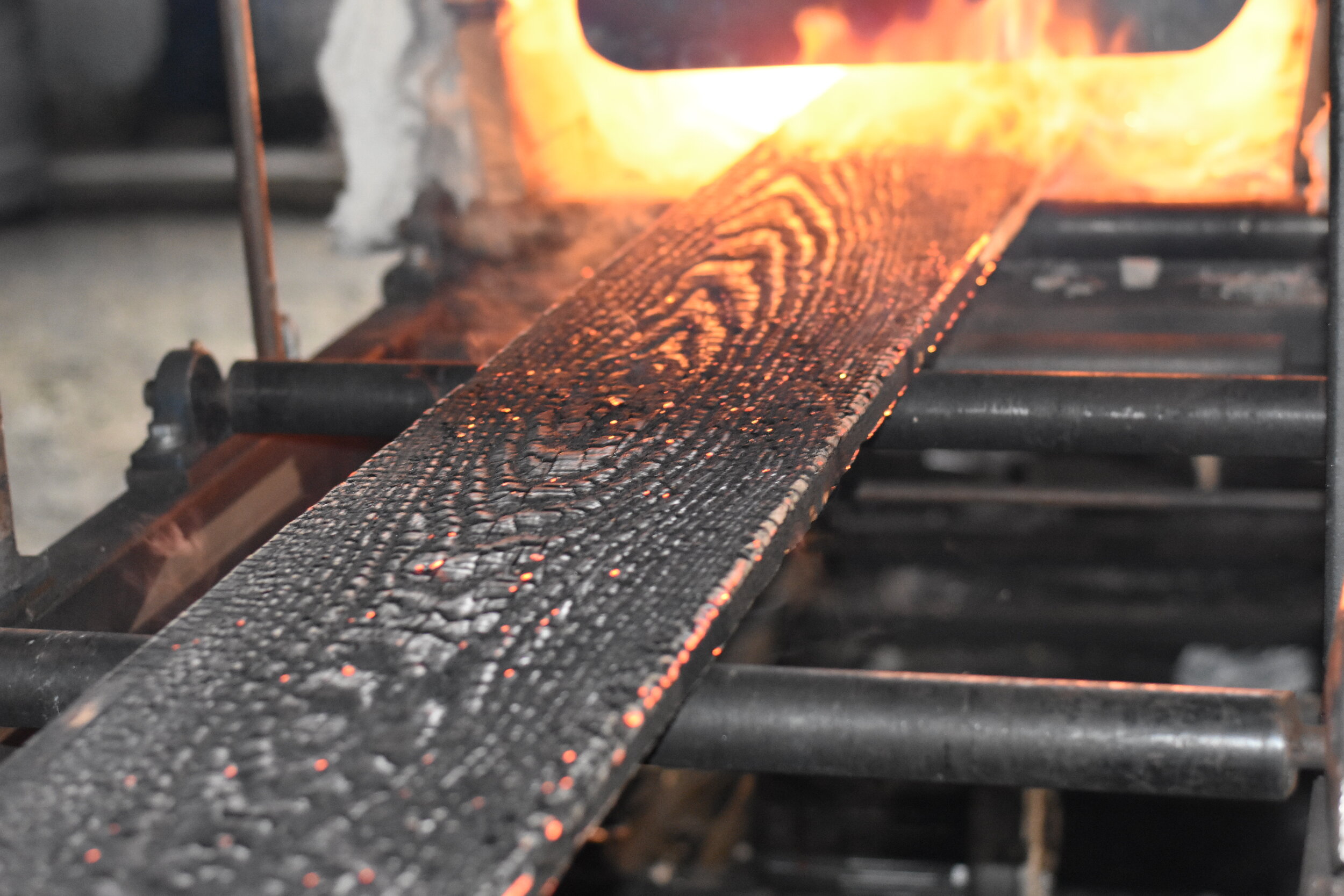History of Yakisugi
Yakisugi or Shou Sugi Ban is a modern approach for creating a charred wood finish, which is coveted for its unique beauty and rarified nature
The technique of Yakisugi was perfected in Japan in the 16th century. The name Yakisugi "焼杉板" has been translated in the West to Shou Sugi Ban - both meaning “charred wood” in Japanese. The method involves charring the surface of wood to provide a long-lasting and beautifully striking charred wood finish. Originally, the wood used to produce Shou Sugi Ban wood was Japanese Cedar– a species that, at the time, produced the most desirable results. Modern forestry has enabled the use of a wider variety of lumber that instills an even larger variety of charred wood surface finishes and durable and versatile uses. The charred wood effect adds a unique dynamic texture to the surface of the wood, while the burning method preserves and weatherproofs the wood.
Cinder Wood Products offers a modern reinvigoration of the Yakisugi method. This ancient Japanese technique of charring wood is the perfect blend of contemporary, natural, and practical.
Cinder Wood Products exemplify the durability, diversity, and quiet beauty of charred wood. We’ve modernized the ancient Japanese wood-charring technique of Yakisugi (焼杉) and adapted it for use in today’s construction market. The result is a building material that is functionally dynamic and visually striking. Our Shou Sugi Ban wood includes Western Red Cedar, Red Oak, Eastern White Pine, and Cypress. Depending on species, duration and intensity of the flame, and whether and how they are brushed after the flame, the surface effect will vary. Cinder is committed to custom charred wood finishes and collaboration with architects and designers.




